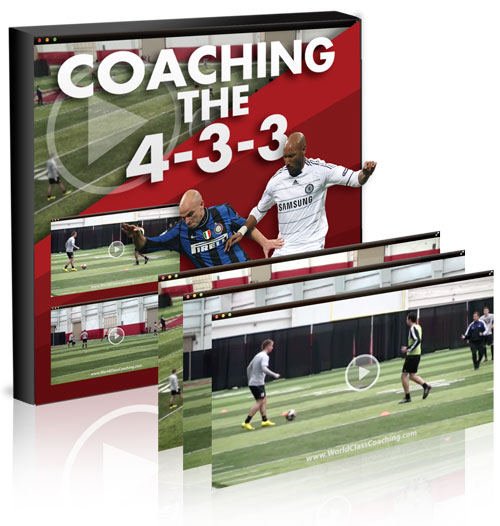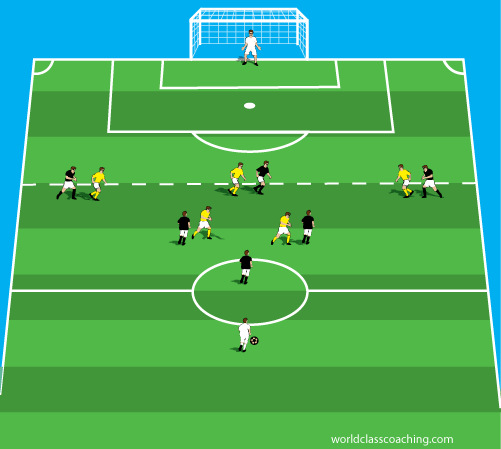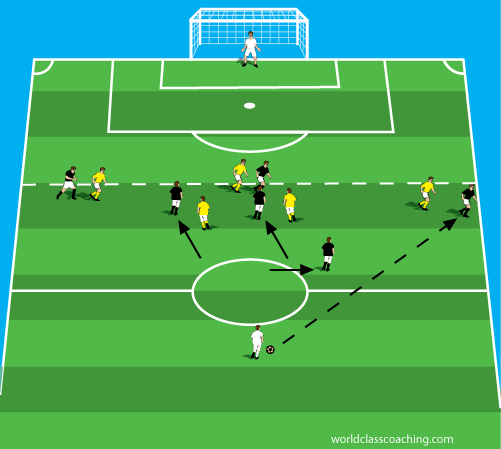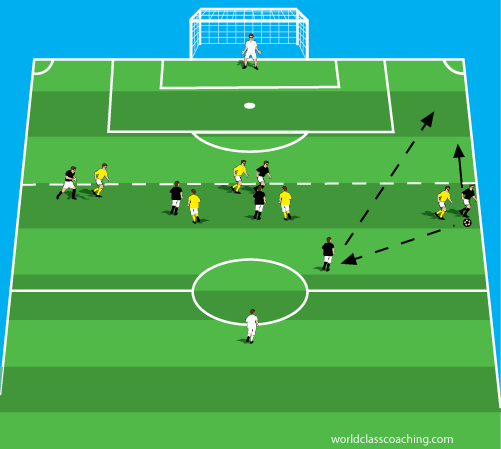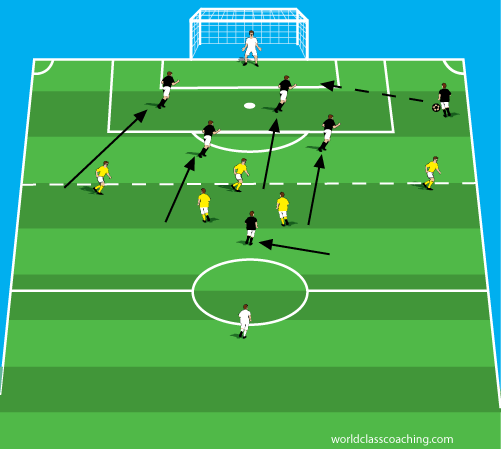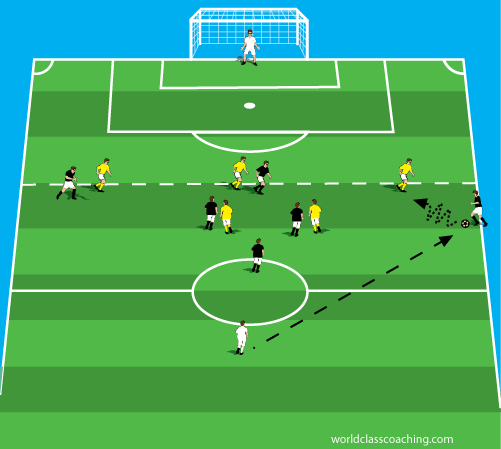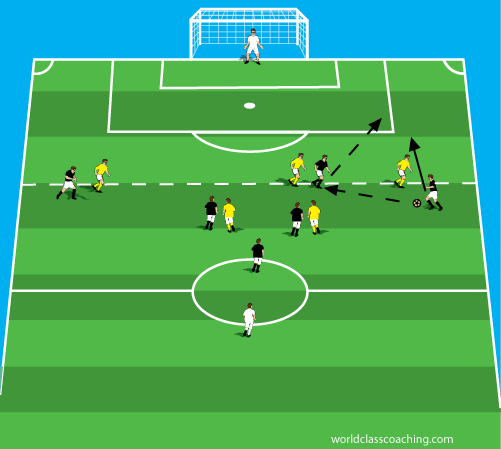Can you teach creativity? Some coaches believe that players are either creative or their not. Certainly there are players that we can all name that appear to be, 'naturally' creative but I believe that most players need to learn to be creative.
I don't think that you could have put Mozart in front of a piano at seven years old and he could just start playing. Learning the basic patterns and structures is vital first step in the process. Once you understand the framework and basic skills you can start to put things together in new an innovative ways.
I take this same approach when working with my teams when it comes to ideas for attacking. I like to give them a number of different attacking patterns to work on before freeing them to see what the defense is giving them and deciding how they can take advantage of it.
Since this is the first year I've implemented a 4-3-3 formation with any of my teams, I turned to an expert for idea on both the attacking and defensive aspects of the system. Randy Waldrum, University of Notre Dame Women's Head Coach, has won numerous coaching awards and League and National Championships. From 1999 he has guided the Women’s team at Notre Dame to the NCAA semi finals nine times including two National Championships. The 4-3-3 system is an important factor in the success of Waldrum's teams.
Here are a couple of the patterns that Waldrum presents in Coaching the 4-3-3. These 12 online videos detail the attacking and defensive principles that are important to the 4-3-3.
Third Pattern
Change the drill by adding three defenders and two defending midfielders. If the defending team wins possession, then they look to pass the ball to the back player that begins the possession. The back player becomes a target player and plays with the team with possession. Once the defending team plays into the target player, then possession goes back to the attacking team. Alternate sides.
Fourth Pattern (Beating Pressure)
The ball begins with the target player passing the ball to the outside right forward. The defensive central midfielder shifts over to support the ball. The right forward receives immediate pressure from the opposing defender. The two attacking central midfielders shift slightly wide and forward to create space for the pass.
The right forward passes the ball to the supporting defensive central midfielder, the turns outside and begins to make a run behind the defender. The defensive central midfielder passes the ball into the space in front of the forward and behind the defender.
Coaching Points
Work on the pattern of beating pressure first without going to goal. Be sure to watch for off sides.
Once the pattern is consistently successful, then have the forwards and midfielders go to goal and prepare for the service from the right forward. Alternate sides.
Fifth Pattern (Low Pressure)
The ball begins with the target player passing the ball to the outside right forward. The wide defender stays inside and does not immediately pressure the forward receiving the ball. The right forward then turns and faces the wide defender and begins dribbling inside towards the defender.
The central forward delays, but then checks toward the ball as an option for the right forward. The right forward passes the ball to the central forward and begins to make a run behind the defense. The central forward makes a one-touch pass to the space behind the defense and in front of the forward. The right forward makes the bending run around the wide defender to receive the ball and go to goal.
These are just a few of the ideas presented in these videos that are instantly available after they're purchased and can be viewed 24/7 through our Training Center.
Have a Great Day!
Tom

